Many would say Chrome is the best browser out there. It’s certainly the most popular, used by more than half of the online world. But it’s a beast that can slow your computer to a crawl if left unchecked.
Multiple tabs, dodgy extensions and over-active plugins can leave you feeling like you’re using Windows 3.1 on a pre-Pentium 486, without the turbo switched on.
So here are few quick tips to help bring Chrome back under control, reduce its impact on your computer and speed up your browsing.
1) Get rid of any plug-ins you don’t use
One of the easiest ways to speed up browsing is to cut back on your plug-ins. Type the following into the Chrome address bar and hit enter:
chrome://plugins
Click disable on any plug-ins you want to turn off.
If a page requires a particular disabled plug-in it will have a notice saying so instead of the video or audio element.
2) Make your remaining plug-ins ‘click to load’
For the plug-ins you want to keep, you can still do more to reduce their impact on Chrome. You can stop media that requires plug-ins, like Flash, from loading without your explicit say so.
There are a variety of extensions to do it, but Chrome’s built in settings for plug-in control are easy to activate.
In the Settings menu under “Show advanced settings” and Privacy, click on Content settings and scroll down to Plug-ins. Check the button for “Let me chose when to run plug-in content”.
When something like a Flash video attempts to load, all you have to do is right-click on the disabled plugin image and select “Run this plug-in” if you want to see it.
3) Remove or disable unnecessary extensions
Extensions are one of the best bits about Chrome, but each one adds bloat to the browser and therefore can eat up more of your computer’s memory and slow it down.
Click the hamburger menu in the top right of Chrome, mouse over “More tools” and click on “Extensions”. Or you can type the following into the address bar and hit enter:
chrome://extensions
Either uncheck the “Enabled” box to simple disable to extension, or click on the trash bin to fully remove the extension.
Disabling it allows you to re-enable it at any time, which is useful for extensions that you use only every once in a while, such as a rolling full-page screenshot utility. Removed plugins can always be reinstalled from the Chrome Web Store, but it’s a few more clicks.
4) Suspend your tabs
Chrome can be quite manageable with only two or three tabs open, but when you have upwards of 10 open at any one time it can bring even the most powerful computer to its knees by sucking up all the available memory.
There are two approaches to handling multiple tabs.
Extensions such as the Great Suspender allow you to suspend the tab and remove it out of memory after a certain length of inactivity without closing the tab in your browser. A suspended tab can be reloaded by simply clicking on it, and that way you don’t lose what you were looking at but also don’t cripple your computer with dozens of active tabs.
The downside is that if the site changes or you go offline you can’t recover the suspended tab. The Great Suspender allows you to whitelist some sites, stop a tab being suspended if it’s receiving input such as a text box or prevent a tab from being suspended on an ad hoc basis.
5) Create saved browser sessions
Instead of suspending tabs individually extensions such as TabCloud+ andSession Buddy allow you to save a whole browser window full of tabs at once. You can then close them all at once, dramatically reducing Chrome’s load on your computer.
When you want to resume working on the saved tabs you can reload them all exactly the way they were in one complete browser window. It carries the same downside as the Great Suspender, meaning restored tabs are loaded fresh from the internet, so if anything has changed or the site’s no longer available then you won’t be able to restore the tab.
6) Turn off background prefetching
Somewhat counter intuitively, if your computer is struggling to handle Chrome, turning off Chrome’s automatic prefetching service, which attempts to predict where you’ll go next and loads at least some of that page in the background, can actually speed up your computer by reducing Chrome’s load.
To try it out, in the Settings menu, listed under “Show advanced settings” and Privacy, uncheck the box marked “Use prediction service to load pages more quickly”.
It could slow down your browsing by stopping prefetching, but it could help the rest of your computer by reducing Chrome’s load on it a little. Only recommended for very slow computers.
7) Use data saver
And finally, if it’s not your computer slowing your browsing down but your internet connection, Google’s Data Saver service can help.
It puts all non-encrypted internet traffic through a compression system hosted on Google’s servers, reducing the amount of data Chrome downloads per page and speeding up page loading on slow connections.
It will also reduce your overall browsing data usage, which can be helpful for metered connections.
To use Data Saver simply install the extension. Be aware that all pages visited that are not using HTTPS connections of incognito tabs will be seen by Google if using Data Saver.
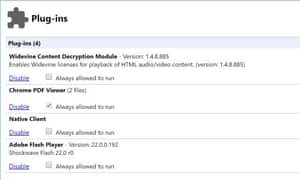
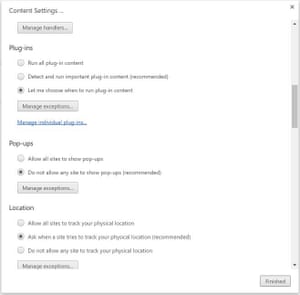
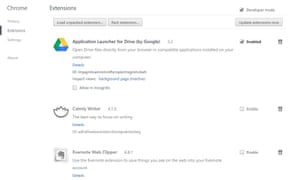

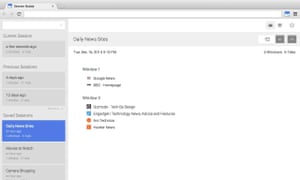
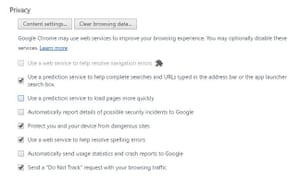
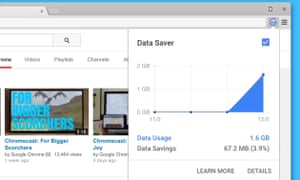
No comments:
Post a Comment